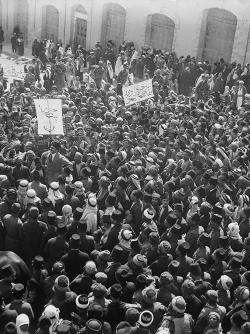Gjoa Haven, Nunavut
Sometimes we put our faith in the wrong things, and the right things surprise us!
On the 19th of May 1845, Sir John Franklin, an experienced 59-year-old Arctic explorer, set sail from Greenhithe, England. Under his command was the nineteenth British expedition attempting to traverse the fabled Northwest Passage, seeking a shorter route to Asia. Franklin was leading two modified warships, the HMS Erebus and the HMS Terror, on what would ultimately become the greatest disaster in 300 years of British exploration.
Furnished with the finest tools, technology and equipment that Victorian England had to offer, the two vessels (weighing more than 350 tons each) were adapted in the hopes of dominating their environment when they reached the frigid Arctic climate. The bows of the vessels were up to eight feet thick and clad in iron, as they anticipated ploughing through pack-ice navigating uncharted waters. A library of more than 1,000 books, an organ and hearty meals of canned foods (a first for any expedition) were stowed on board to keep the men in good health and upbeat spirits.
Unexpected Disaster
There was an extraordinary confidence in the power and might of these Industrial Age floating fortresses, which is why the Royal Navy was in utter shock when it received reports that all men had died on the expedition. Through cold exposure, lead poisoning (perhaps from their canned food) and scurvy, the crew had fallen into disarray after the death of Sir John Franklin, who died ten months after the vessels became trapped in pack-ice off the coast of King William Island. It has been more than 170 years since Franklin and his men were lost, and only now are we finding out the full story of the tragic outcome of their failed expedition. The wrecks of the Erebus and the Terror were discovered only recently. Canadian scientists have also conducted extensive tests on the well-preserved bodies of the sailors found on King William Island. At the end, it appears that some resorted to cannibalism, as there seemed no escape from the barren landscape or frigid, icy prisons that their vessels had become. Others attempted to walk south and, except for meeting a couple of Inuit hunters who shared their rations, they were never seen again.
Flexible Mission
Almost sixty years after Franklin’s expedition, in the summer of 1903, a small 45-ton fishing vessel named the Gjøa (pronounced “joa” by North Americans and “yoa” by Norwegians) set sail from Oslo under the midnight sun, in another attempt to finally traverse the Northwest Passage. The tall Norwegian captain of this vessel was Roald Amundsen. He had spent years reading about the failed attempts to find a route through the frozen waters and believed that he knew how to succeed where others had failed.
Amundsen realised that the hostile climate of the Arctic could not be conquered by rigid power and might; rather, one would need to be flexible and adapt to the severe conditions in order to successfully traverse the frozen landscape. The Gjøa was not built to push through ice floes but instead, with its shallow draft and small frame, could sail through channels that would be impassable for larger vessels.
Following the same route as Franklin’s expedition, Amundsen chose to sail south from Beechy Island down the Peel Sound. Arctic pack-ice sometimes leaves a narrow and often shallow channel when it meets the relatively warmer coast line. It is through these narrow leads that Amundsen’s shallow-draft fishing vessel was able to avoid the same fate as Franklin’s expedition, which became trapped in the compounding pack-ice. Sailing around the eastern side of King William Island, Amundsen and his crew found a small natural harbour that was safe enough for the Gjøa to be moored through winter. This place is known today as Gjoa Haven, and a small community of just over 1,000 Inuit lives there.
Learning to Adapt
It was the Inuit who taught Amundsen how to survive in this cold, harsh climate. Though the Inuit had been considered little more than uneducated savages by the British explorers, Amundsen instead spent his time trying to learn everything he could from them, recognizing that they clearly held the knowledge about survival in the Arctic. Swapping wool clothing for animal skin undergarments and Caribou fur, he learned how to build an igloo and how to hunt and fish in the bleak and desolate landscape. One of the most important skills he learned here was how to travel overland with sled dogs. (In 1911, this skill would enable him to become the first man to reach the South Pole, arriving there five weeks before Robert Falcon Scott’s ill-fated expedition.)
After spending two winters with the Inuit at Gjoa Haven, Amundsen once again set sail with his crew, maneuvering through narrow, shallow channels—sometimes through water only three feet deep. Franklin and his modified warships would never have succeeded in navigating such challenging waterways. Eventually, on August 26, 1905, the crew spotted another vessel: an American whaling ship from San Francisco. Thus the Northwest Passage had finally been traversed.
By comparing the strategy of Franklin’s failed expedition to that of Amundsen’s successful endeavour, we are able to learn a valuable lesson. We can often, even unconsciously, put too much faith and confidence in advances in science and technology, the grandeur of design and human innovation, or the impressive achievements of corporations and institutions in society around us. Franklin and his men were confident that the material provisions and advanced technology with which they had surrounded themselves would be sufficient to cope with whatever nature could throw at them. By contrast, Amundsen was able to carefully navigate a much smaller vessel through the treacherous waters of the Arctic in an almost David-and-Goliath comparison to Franklin.
We can know from Luke 12:32 that God is working through His “little flock” to carry out the final stages of His Work before Jesus Christ triumphantly returns to Earth. This flock is not comprised of the most successful, mighty or best educated of society. Instead, “God has chosen the weak things of the world to put to shame the things which are mighty” (1 Corinthians 1:27). The Apostle Peter was perceived to be uneducated and yet had the truth and understanding that leads to eternal life.
In much the same way, the Inuit were perceived to be savages, and yet held the keys to survival in a harsh environment.
We would do well to learn from Roald Amundsen’s wisdom and not put our confidence or faith in “big ships”—or, more precisely, the pomp and ceremony of a “mega-church.” While that may look impressive to men, our faith and confidence should only be in God, relying entirely on Him to navigate us through all kinds of weather.






